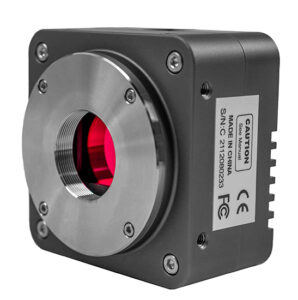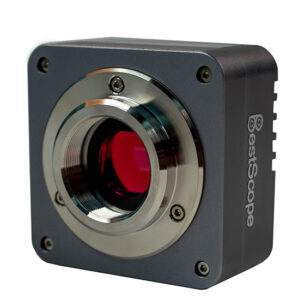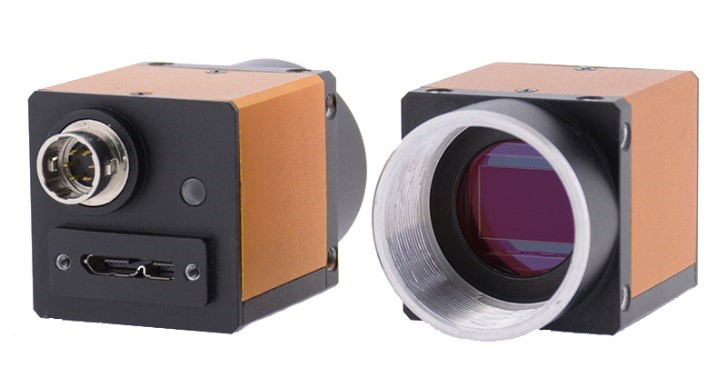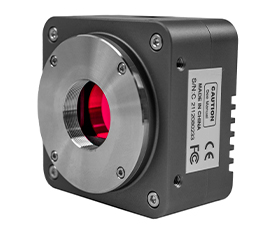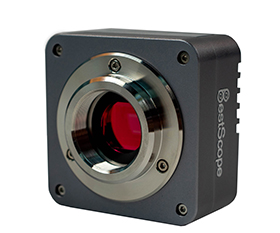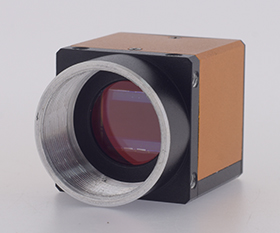CCD VS CMOS: What is the Difference between CMOS Sensor Camera and CCD Sensor Camera?
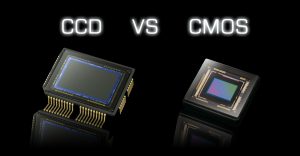 A CCD (Charge Coupled Device) sensor is a type of electronic device used for capturing and recording digital images. It converts incoming light into electrical charge, which is then transmitted and stored as digital data. CCD sensors consist of an array of millions of tiny light-sensitive cells called pixels. The charge accumulated by each pixel is proportional to the intensity of the light shining on it. This charge is then read out and converted into a digital value, forming an image.
A CCD (Charge Coupled Device) sensor is a type of electronic device used for capturing and recording digital images. It converts incoming light into electrical charge, which is then transmitted and stored as digital data. CCD sensors consist of an array of millions of tiny light-sensitive cells called pixels. The charge accumulated by each pixel is proportional to the intensity of the light shining on it. This charge is then read out and converted into a digital value, forming an image.
A CMOS (Complementary Metal Oxide Semiconductor) sensor is another type of image sensor used in digital cameras, smartphones, and other devices. CMOS sensors do not use the analog method of CCD, but use a digital design. CMOS sensors consist of an array of pixels, just like CCD sensors. However, each pixel has its own amplifier and analog-to-digital converter, allowing individual pixels to be read out and converted into digital signals.
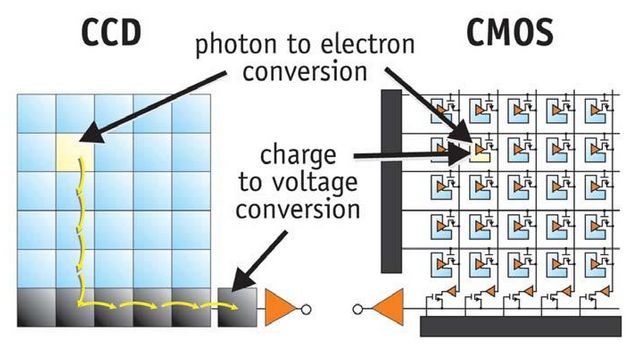
What is the Difference between CMOS Sensor and CCD Sensor?
|
|
CMOS |
CCD |
|
Technology and Structure |
1. A complementary metal oxide semiconductor technology. 2. Each pixel includes a photodiode for light sensing and an integrated amplifier, analog-to-digital converter (ADC), and other electronics. 3. Read each pixel independently and in parallel. Capture data from multiple pixels simultaneously. |
1. A charge coupled device technology. 2. Each pixel includes a photodiode, and charge transfer structures. 3. Transfer charge sequentially from one pixel to the next, and this sequential transfer process is used to read the entire image. |
|
Power Consumption |
Low power consumption. |
Consume more power |
|
Speed and Frame Rates |
It can read out pixels in parallel, making them capable of high-speed continuous shooting and video recording. They are well-suited for capturing fast-moving subjects. |
It read pixels sequentially, limiting their speed and frame rate capabilities. They are not ideal for high-speed applications. |
|
Noise and Image Quality |
In low-light conditions, it has higher noise levels. High-quality images. |
Low noise levels. High-quality images. |
|
Integration and On-Chip Features |
It can be integrated with on-chip electronics, enabling the incorporation of additional features like image processing, digital zoom, and video recording capabilities. |
It does not typically integrate additional on-chip features, limiting their adaptability in terms of on-board processing and additional functions. |
|
Applications |
They are widely used in consumer digital cameras, smartphones, webcams, security cameras, and industrial vision systems due to their versatility, power efficiency, and cost-effectiveness. |
They are still used in applications where image quality and low-light performance are crucial, such as astronomy, high-end photography, and some scientific and industrial imaging applications. |

Comparison of Sony CMOS IMX420 and CCD ICX694
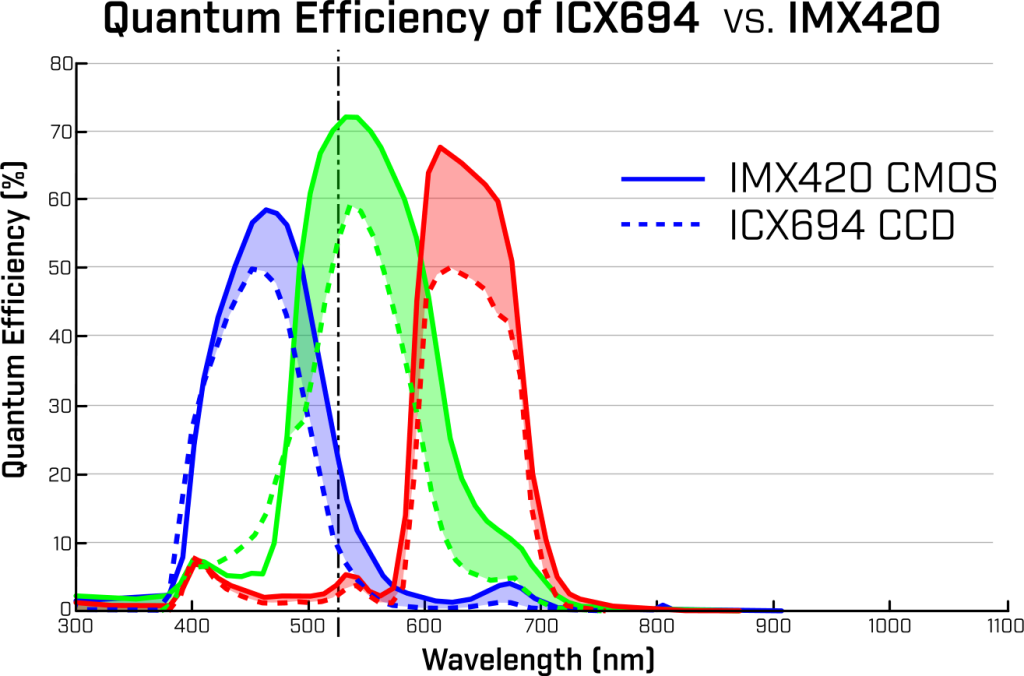
CCD and CMOS sensors are both used in microscope cameras and industrial cameras, but they each have their own strengths and applications.
In microscope cameras, due to the development of CMOS sensors, traditional CCD sensors have gradually been replaced. They offer competitive image quality and are suitable for many routine microscopy applications, as they can provide high-resolution images with good color accuracy.
They are particularly well-suited for live cell imaging and dynamic studies because of their high frame rates, allowing real-time observation of biological processes.
In industrial cameras, CMOS sensors have become the first choice due to their low power consumption, high integration and adaptability. They can capture high-speed image sequences and are ideal for tracking moving objects and monitoring production lines. CMOS sensors are often integrated into smart cameras used in industrial automation, robotics, and machine vision systems, enabling real-time data processing and analysis.
Although CMOS sensors have many advantages in microscope cameras and industrial cameras, CCD sensors still have advantages in some specific applications, especially when higher image quality and lower noise levels are required.
Microscope Camera BUC5F-500C (CMOS IMX264) Compare with BUC4C-520C (CCD ICX655)
BUC5F-500C USB3.0 BUC4C-520C USB2.0
|
Model |
Sensor & Size(mm) |
Pixel Size(μm) |
G Sensitivity Dark Signal |
FPS/Resolution |
Binning |
Exposure |
|
5.0M/IMX264(C, GS) 2/3” (8.45×7.07) |
3.45×3.45 |
1146mv with 1/30s 0.15mv with 1/30s |
35@2448×2048 50@1224×1024 |
1×1 1×1 |
0.1ms~15s |
|
|
5.2M/ICX655AQ(C) |
3.45×3.45 |
420mv with 1/30s 4mv with 1/30s |
4.3@2448×2050 |
1×1 |
0.22ms~60s |
Industrial Camera Jelly6-MU3HS500M/C (CMOS IMX250)
Jelly6-MU3HS500M/C
|
Model |
Color/Mono |
Sensor & Size(mm) |
Pixel Size(μm) |
Max Resolution |
Frame Rate |
Shutter |
Exposure |
|
Mono/color |
Sony IMX250 2/3 inch |
3.45×3.45 |
2464×2056 |
75fps |
Global |
Auto / Manual |
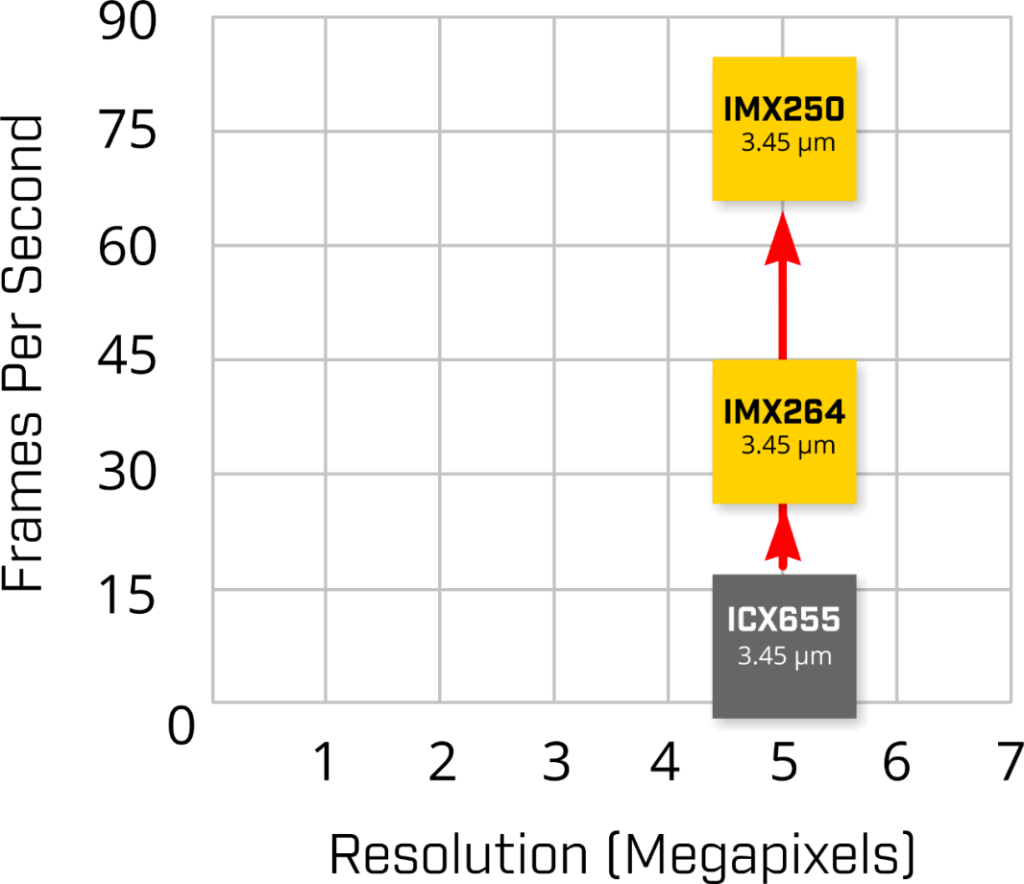
If you have any question about choosing a microscope camera, please feel free to contact us.


